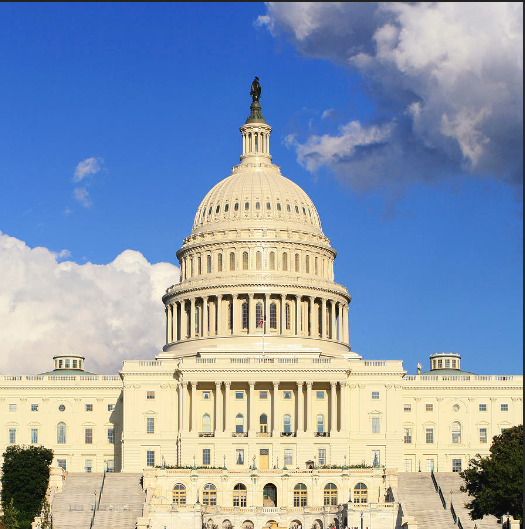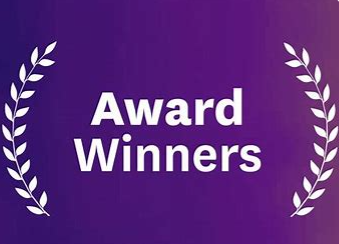Workplace Mentoring To Advance Equity

Caroline Holland
Storytelling Manager, MENTOR
When you ask people who are excelling in a career field about how they achieved success, they’ll usually reference a few of the same things: hard work, luck, and, perhaps most importantly, mentors who helped guide and support them along their way.
Data corroborates the importance of workplace mentoring. The final report of MENTOR’s National Mentoring Project–– a collaborative of youth-focused organizations creating workplace mentoring relationships for Opportunity Youth–– found that almost 90% of young adults who had mentors in the workplace were retained in their jobs for over 90 days. 72% of participants felt their mentors had helped them determine their next steps on their career or educational journey. Mentorship can be especially effective in supporting young people experiencing marginalization, including youth of color, those with disabilities, and those who identify as female; it is an essential part of advancing equity in the workplace.
MENTOR is a national organization devoted to the mentoring movement. We’re the go-to resource on quality mentoring. Our workforce development programs integrate a number of strategies and practices that are designed to support young people and pursue equity in workplaces, all of which aim to increase mentorship in workplaces throughout the country.
Advocacy

Policies that support mentorship are crucial to ensuring young people from all walks of life are supported at work. MENTOR supports key pieces of legislation that will enhance young peoples’ career development, including:
- The Youth Workforce Readiness Act (H.R. 3342/S. 1696), which would establish a funding stream specifically for out-of-school time (OST) providers to do workforce development programming for young people that would include required mentoring for the duration of the programming. (You can take action now in support of this bill here.)
- Changes in the Workforce Innovation and Opportunity Act (WIOA) that would, among other things: reserve significant allocations of funding for “opportunity” or “at-risk” youth, with additional funding for direct financial assistance to eligible youth engaged in WIOA programs; require that staff who come into contact with eligible youth undergo trauma-informed and equitable service delivery training; and refer technical assistance for employers, programs, or staff who will be mentoring youth in these settings to the National Mentoring Resource Center.
- The Opening Doors for Students Act (H.R. 4403), which would provide summer or year-round employment programs for young people and require them to offer mentoring for eligible youth, as well as coaching and mentoring services for employers to successfully retain them.
MENTOR also advocates for public funding to support partnerships between schools, employers, and community-based organizations for training, mentoring, and work-based learning experiences, in addition to further research on best practices in career and workplace mentoring.
Training

Effective mentorship provides measurable results when it comes to supporting young people in the workplace – the key word being “effective.” Impactful training can help mentors and mentees alike cultivate strong mentoring relationships that lead to continued success in the workplace.
MENTOR’s Connect | Focus | Grow training curriculum helps industry professionals create a mentoring mindset, increasing positive outcomes for youth and job seekers who are not traditionally seen as candidates. The curriculum, which was developed as part of MENTOR’s National Mentoring Project, employs a three-pronged approach:
- Equipping mentors with skills to effectively support the personal and professional growth of young people.
- Coaching supervisors on how to manage with a mentoring mindset.
- Guiding young people towards engaging and leveraging mentoring opportunities while, at the same time, meeting their goals.
The training serves young people who are entering or preparing to enter the workforce; supervisors of youth employees; and community-based and employee mentors. As part of the training, supervisors receive guidance on how they can incorporate mentorship into their management style, particularly when working with young people who may not have significant experience in the workplace. Young people, meanwhile, learn how they can build and leverage relationships to advance and sustain their career journeys.
These skills benefit both participating companies and young people who work at them. Paloma Izquierdo-Hernandez, CEO of the Urban Health Plan network of community health centers, noted that one of the greatest benefits was, “watching both recipients be able to go through this process and grow jointly, because as much as we think the growth is in the mentee, there is a certain amount of growth that happens in the mentor.”
Charles Kimble, a National Mentoring Program participant, offers a perspective from a mentee: “[The program] challenged me in a way that didn’t make me feel like my back was against the wall. They just wanted to see how much I could grow.”
The Workplace Equity Pledge
MENTOR’s 2022 Workplace Equity Pledge provides resources to individuals who want to manage with a mentoring mindset, so all young people have access to the opportunities, resources, and relationships they need to thrive. The pledge represents an actionable commitment to support tomorrow’s leaders by pursuing equity in the workplace. The pledge provides a variety of ways for individuals to participate, so that people in all roles and levels of an organization can take impactful action.
What Next?
While we live in a time that seems, in some ways, to be defined by division and polarization, mentorship is an area where most Americans agree with each other. Two-thirds of American adults believe it is highly important for young people to have mentors. Nearly 9 in 10 feel that more mentoring is needed in our country—with more than 8 in 10 supporting the use of government funds to grow mentoring opportunities.
The benefits are undeniable: companies who support youth mentoring have higher levels of career and job satisfaction. (73% of employees in companies that support youth mentoring report strong career satisfaction.) It’s clear that when we encourage and support mentorship in the workplace, everyone benefits.
Are you interested in doing or learning more? In addition to taking the Workplace Equity Pledge, here are four actions you can take:
1. Advocate: encourage your Congressional Representatives to support the Youth Workforce Readiness Act.
2. Learn: watch MENTOR’s training on bringing a Mentoring Mindset to the workplace
3. Elevate: download our resource on the power of workplace mentoring and share it within your organization.
4. Explore: download MENTOR’s new resource, Becoming a Better Mentor: Strategies To Be There For Young People.


National Association of Workforce Boards | All Rights Reserved |
Created by Olive + Ash.
Managed by Olive Street Design.








